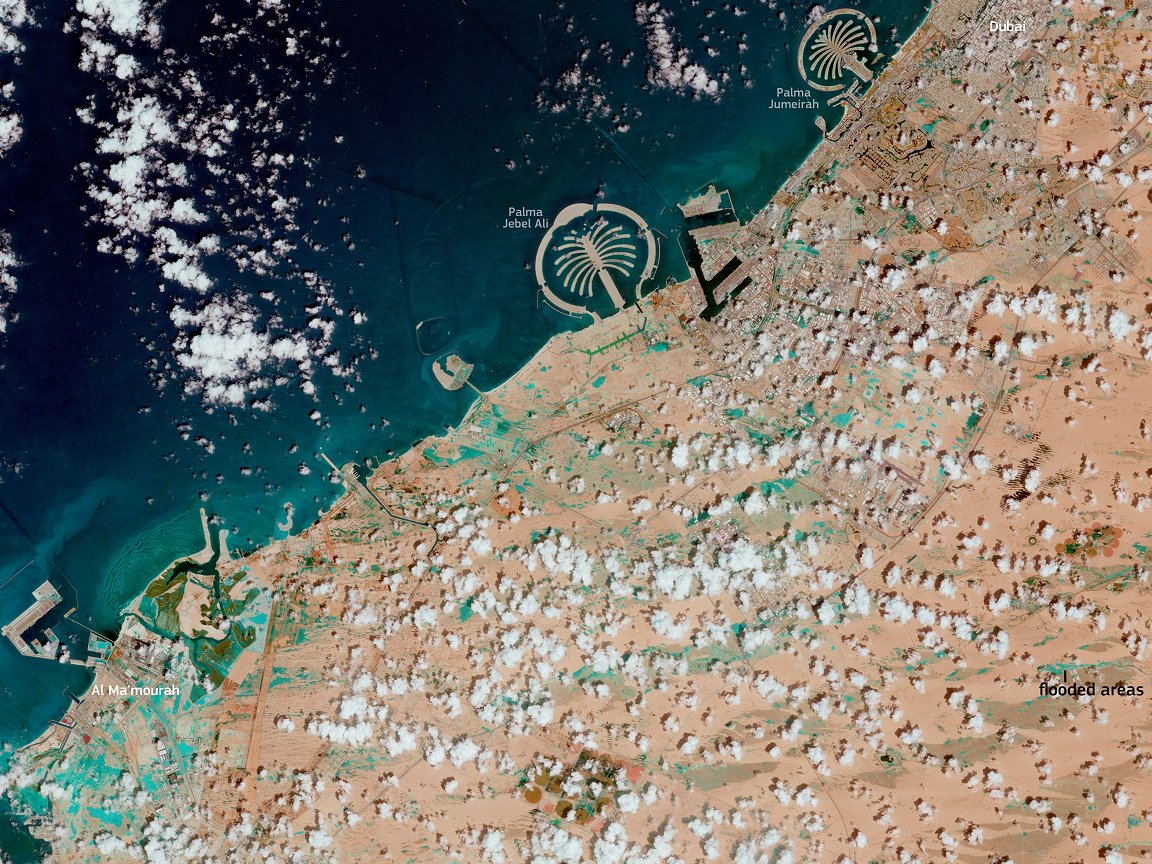
Study – Climate change most likely caused extraordinary rainfall that affected Arabian Peninsula

By the Climate Centre
Already intense rainfall in El Niño years comparable to what the United Arab Emirates and Oman especially saw last week has become up to 40 per cent heavier still, World Weather Attribution scientists said today, and while observations suggest El Niños are an important factor, global warming is the most likely explanation.
At the current 1.2°C of global warming, the atmosphere would hold at least 8 per cent more moisture, while “changing circulation patterns driven by global warming can further increase the intensity of rainfall in particular regions,” the team’s latest study said.
They added that “there are no other known explanations for the increasing rainfall in the region.”
On 14 and 15 April, the Arabian Peninsula was affected by extreme rainfall and flash floods, and in Dubai (photo) more than 14cm fell in 24 hours – the equivalent to a typical year and a half’s worth of rain and the heaviest in the UAE since records began in 1949.
Mariam Zachariah, a researcher at Imperial College London, who took part in the study, said today that the “finding is not surprising and agrees with the basic physics that a warmer atmosphere can hold more moisture.
“Model uncertainties meant we couldn’t complete the last step of the analysis to precisely quantify how much of the increasing rainfall is due to climate change [but] multiple lines of evidence point to climate change as the most likely explanation for the increasing rainfall.”
‘Flood preparations’
The Climate Centre’s Head of Urban and Attribution, Roop Singh, adds: “The rainfall was well forecast and dangerous flooding was expected.
“But when the rains hit, more than 20 people reportedly lost their lives in floodwaters – the majority inside their vehicles. It’s critical that future flood preparations focus on early warning to ensure people aren’t in harm’s way when extreme rainfall hits the Arabian Peninsula.”
The study did not investigate the possible influence of cloud seeding on the rainfall.
It was conducted by scientists from (alphabetically) Germany, the Netherlands, Saudi Arabia, Sweden, Switzerland, the UK and the US.
A photo taken by Eumetsat’s Sentinel 2 on 17 April shows flooded areas of Dubai in light blue, with the famous Jebel Ali and Jumeirah artificial archipelagos at top right. (Photo: Eumetsat)